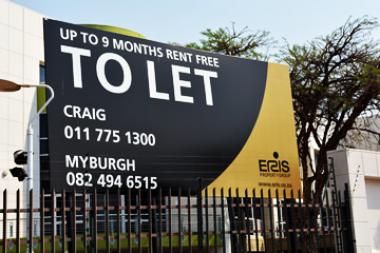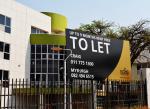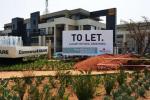SA Office Sector still facing an Uphill Battle to Recovery
 Given the weak economic growth, some major players in South Africa's property industry have started offering up to 9 months' rent free.
Given the weak economic growth, some major players in South Africa's property industry have started offering up to 9 months' rent free.
Other commercial property markets have seen impressive turnarounds in the midst of South Africa real estate recovery, particularly in Retail and the Industrial sectors, but the Office Market continues to languish as fewer companies place a premium on office space.
Given the weak economic growth how is the office sector performing?
Weak economic growth has seen the office market muddling along with overall vacancies still high particularly for older stock and secondary areas, with rental growth stagnating in large cities.
According to the Jones Lang Lasalle Johannesburg market review, increasing cost pressures in the current stagnant economic environment continue to burden the South African business community and the already over indebted consumers.
Jones Lang Lasalle head of research Ndibu Motaung says the gap between prime and secondary property is widening.
“Often defined by location, rentals for prime office, industrial and retail property in the country’s major metropolis have held firm. This is particularly true of new facilities where tenants are able to benefit from utilization efficiencies and subsequently able to absorb premium rentals,” Motaung says.
Asked if the office sector is likely to see an improvement anytime soon, she says the sector’s improvements will driven by improvements in the economy and large take up of current office space.
But all is not gloom and doom for the office sector despite the weak economy. Despite the lacklustre growth, prime nodes such as Sandton, Illovo, Rosebank in Johannesburg, V&A Waterfront in Cape Town and Umhlanga in Durban are doing well.
“There is good take up of newly committed office space. Developers are also waiting for economic improvements before committing to more projects. Efficiencies are the key drivers behind corporate office markets through office consolidation,” Motaung says.
She says whilst market conditions could generally be described as being at the “bottom of the cycle”, “its resilience is remarkable, given the lacklustre state of the economy (both local and international) coupled with alarming increases in the actual costs of property occupation, most notably, municipal charges and electricity”.
When it comes to growth in the office sector, Motaung says improvement in the global economy and hopefully South Africa becoming a production driven economy could offer a helping hand to the market.
“However the protracted striking season is causing further damage to the country which will result in uncompetitive market,” she says.
With new office developments around Gautrain stations now the flavour of the moment, she says most cranes are concentrated around Sandton and Rosebank, this is evident that such Gautrain infrastructure is still driving location choice.
Motaung says the biggest threat facing the commercial property market is the increasing cost of occupancy. Occupiers are focused on affordability, investors on yield.
“It is the balance between these two factors that gives rise to achievable market rentals. Impose above inflationary increases in municipal rates and services tariffs together with the ever increasing range of "stealth taxes" and the result has to be strong downward pressure on net rentals,” Motaung says.
As tenants grapple with affordability, the margin for net rental increases diminishes. And without net rental growth, development viability is arrested and investment in the sector becomes less appealing.
Increased commitment to development projects is providing occupiers a wider choice of office buildings options at contained rental levels, particularly in the prime areas.
The demand in the Johannesburg office market continues to be driven by further consolidation of large corporates into new buildings, particularly in prime areas such as Sandton and Rosebank, according to the Jones Lang Lasalle Johannesburg market review.
The increased commitment to non-speculative development in the past year by blue chip corporate occupiers is further confirmation of demand for quality and efficient office facilities in prime nodes. Prime buildings in prime nodes continue to appeal to a number of tenants as more quality buildings are added to the market.
This is further evidenced by the planned relocation by Webber Wentzel and petrochemical giant, Sasol to new buildings in Sandton due to corporate consolidation.
As SA Commercial Prop News reported earlier this year, Office supply recorded by the South African Property Owners Association (SAPOA) show a slight decrease this quarter, specifically in the Sandton area due to older buildings being removed from the market in preparation for redevelopment and Completed developments increased in the current period to reach 80,884m² compared to 8,500m² in the previous quarter.
Indicative projects include the highly anticipated Standard Bank 69,000m² building which added appealing aesthetics to the Rosebank skyline; a 6,000m² office building to be occupied by DG Group in Randburg and Ballyoaks offices of 2,884m² in Bryanston.
Gains are evident in particularly the retail but also the industrial sectors, according to the SAPOA / IPD South Africa Biannual Property Indicator report released on 25th September 2013.
The report showed retail sector posted an overall total return of 10.0%; 5.9% capital return and 3.9% income return. The industrial sector followed closely with 9.1% overall return of which 3.9% was capital growth and 5.0% income return. Offices trailed behind at 7.9% total return, comprising 3.5% capital and 4.3% income return.























